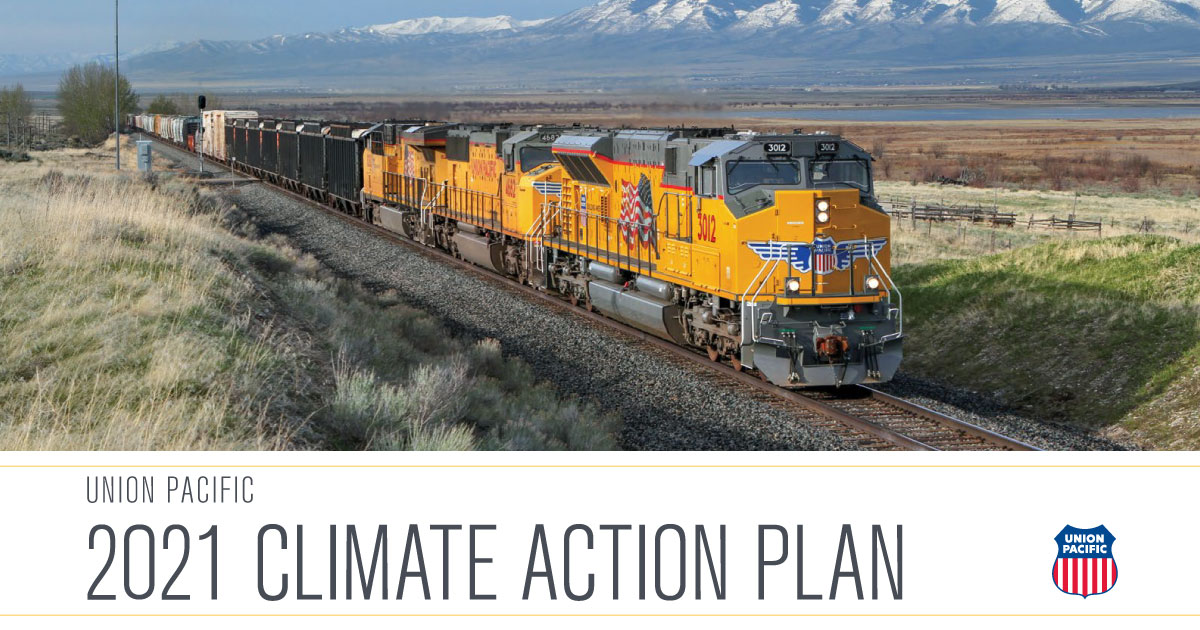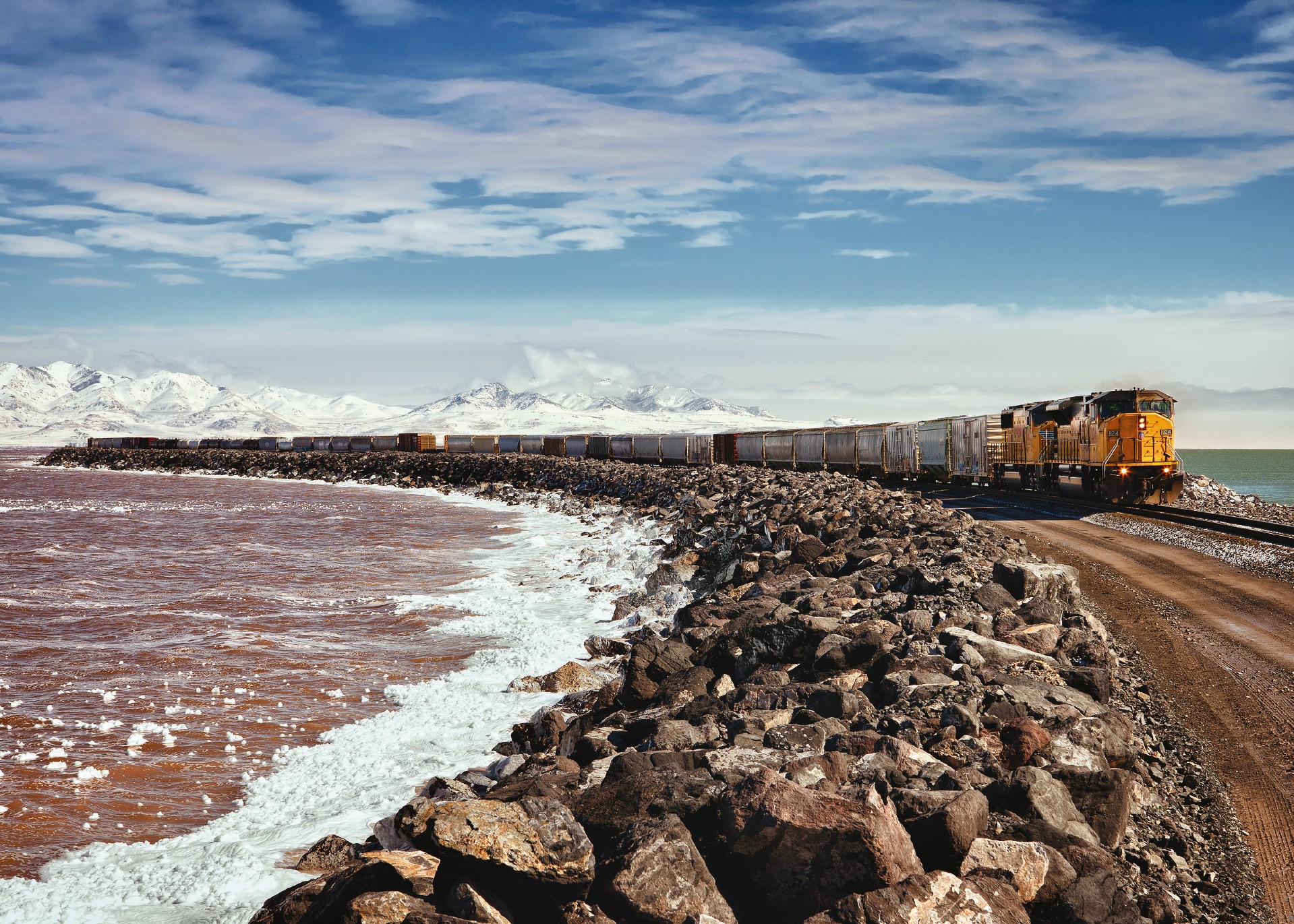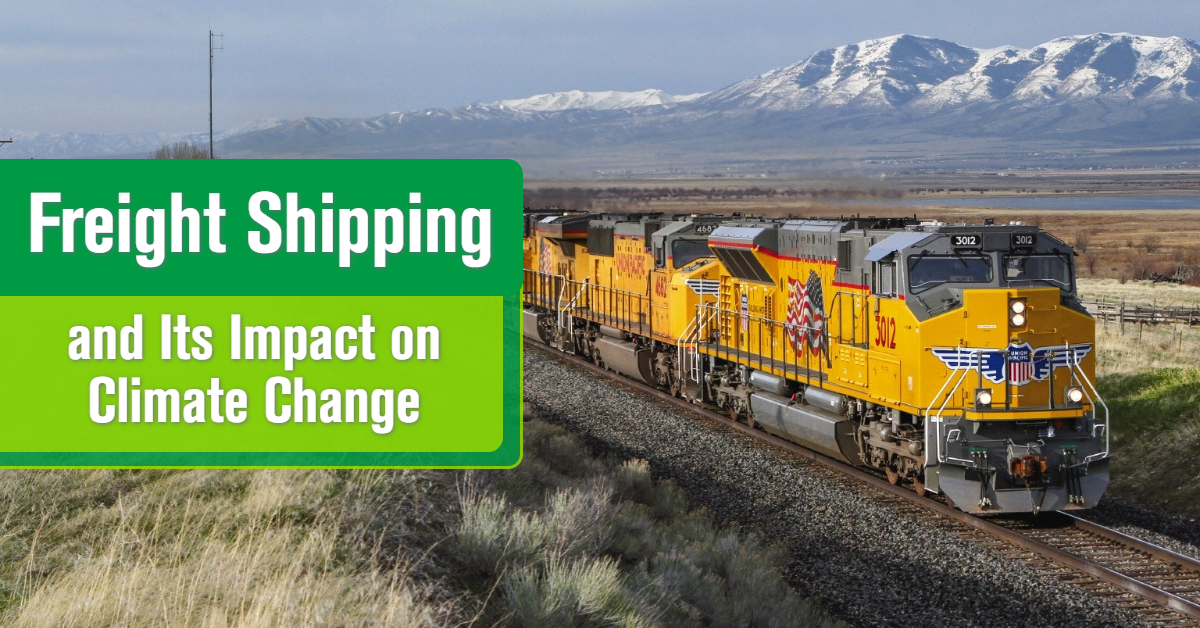Climate change can have some very devastating effects: extreme and destructive weather events like floods, tornados and hurricanes, temperature and precipitation changes that can impact industries from tourism to construction and shifts in ecosystem characteristics like shortened growing seasons.
All of these events can impact the global economy and the way companies do business, making addressing climate change a priority for companies worldwide. Fundamental to the cause is finding ways to reduce greenhouse gas emissions (GHG). The transportation sector is a key area of focus in the fight against climate change, as it is one of the largest GHG contributors. Here’s what railroads are doing to reduce the impact.
What Role Does Transportation Play in Climate Change?
According to EPA data, in 2019 the transportation sector accounted for the largest portion of total U.S. GHG emissions, at 29%. However, even though freight railroads handle 40% of U.S. freight, they account for just 0.5% of total U.S. greenhouse gas emissions and just 1.9% of transportation-related greenhouse gas emissions.
The reason the percentage is so low for railroads is that they are the most fuel-efficient way to move freight over land, and greenhouse gas emissions are directly related to fuel consumption. Trains offer a more environmentally responsible method of shipping for several reasons:
- One train can carry the freight of hundreds of trucks, which reduces highway congestion and GHG emissions.
- On average, U.S. freight railroads can move one ton of freight more than 480 miles per gallon of fuel, making them 3-4 times more fuel efficient than trucks.
- As a result of their improved fuel efficiency, moving freight by train instead of truck reduces GHG emissions by up to 75%.
All of this means the transportation mode companies choose to haul their freight can have a big impact on greenhouse gas emissions. In fact, according to the Association of American Railroads (AAR), if 25% of the truck traffic moving at least 750 miles shipped by rail instead, annual greenhouse gas emissions would fall by approximately 13.1 million tons; If 50% of the truck traffic moving at least 750 miles went by rail instead, greenhouse gas emissions would fall by approximately 26.2 million tons.
How Can Railroads Reduce Greenhouse Gas Emissions?

Although shipping by rail offers environmental advantages over truck, railroads can still do their part to reduce greenhouse gas emissions and lessen their impact on the environment.
At Union Pacific, our emissions fall into the following categories:
- Scope 1 – Direct emissions from owned or controlled sources, like locomotives
- Scope 2 – Indirect emissions from the generation of purchased energy
- Scope 3 – Indirect emissions related to fuels, rail tie combustion, business travel and employee commuting, and various purchased products.
In February 2021, Union Pacific announced a science-based target to reduce absolute Scope 1 and 2 greenhouse gas (GHG) emissions by 26% by 2030 from a 2018 baseline. In December 2021, Union Pacific published its Climate Action Plan, a pragmatic approach to reducing the impact our activities have on the world’s climate. Our Climate Action Plan announced an ultimate goal to achieving net zero emissions by 2050.
What Strategies Is Union Pacific Employing to Combat Climate Change?

The Climate Action Plan outlines four overarching strategies to reduce our company’s carbon footprint.
Strategy 1: Improve operational efficiency and minimize fuel consumption by modernizing our locomotive fleet and implementing energy management technology.
Examples:
- Retiring old locomotives and adding new ones to improve fuel efficiency. Union Pacific has invested roughly $3.4 billion to purchase more than 1,300 new, more fuel-efficient locomotives since 2010, around 20% of our total fleet. At the same time, we have retired about 2,500 older, less fuel-efficient locomotives.
- Overhauling existing locomotives to be more fuel efficient. Through our fleet modernization program, we are working to apply modern locomotive technology to our existing locomotive fleet to improve reliability, which makes locomotives more fuel efficient and reduces emissions. In 2020 we overhauled 175 high- and low-horsepower locomotives to meet more stringent emissions standards. Each locomotive modernization results in an approximate 53% reduction in emissions and an additional 5% reduction in fuel consumption per engine. We expect to complete around 100 modernizations in 2021 and plan for another 120 in 2022.
Because locomotive operations represent our greatest source of GHG emissions, the majority of our efforts to reduce our carbon footprint involve our locomotive operations. In 2018 (our baseline year), emissions from locomotives comprised 97.6% of our target scope GHG emissions and 85.4% of our total calculated emissions.
Strategy 2: Offer sustainable supply chain solutions to capture emerging transportation opportunities, explore supply chain circularity, and provide an excellent service product that establishes rail as the environmentally responsible surface transportation solution.
Examples:
- Reducing emissions by converting truck traffic to rail. Union Pacific is positioned to provide lower carbon transportation solutions that can help our customers reach their environmental targets, as converting traffic to rail from truck offers an immediate reduction in Scope 3 GHG emissions. In 2021, Union Pacific customers reduced their GHG emissions by approximately 22.9 million metric tons because they chose rail over truck transportation. That’s the equivalent of removing 4.32 million cars from our highways or planting 335 million trees.
Tip: Use Union Pacific’s Carbon Emission Estimator to calculate your potential carbon emissions savings as a result of shipping by rail instead of truck.
- Shipping recycled goods and renewable energy sources. Union Pacific is helping to support the transition to a low-carbon economy by shipping sustainable, recyclable goods. Over the past 10 years, we have moved more than 80,000 carloads of wind components, and we are positioned to serve developing markets like low-carbon fuel and battery shipments.
Strategy 3: Decarbonize our footprint and the environment by increasing our use of low-carbon fuels and experimenting with alternative propulsion methods and exploring nature-based solutions.
Examples:
- Using low-carbon fuels. Increasing the use of renewable diesel and biodiesel fuels currently represents the most promising avenue to help Union Pacific meet its science-based target. We are working to increase the percentage of low-carbon fuels consumed to 10% of our total diesel consumption by 2025 and push that number to 20% by 2030.
- Using alternative energy sources. We are pursuing battery-electric switcher technology and evaluating electrification of vehicles and other equipment used to operate the railroad.
Building on rail’s environmental advantage over other modes of transportation, Union Pacific is committed to reducing its carbon footprint as we recognize our role in reducing climate impacts when and where we can.
Strategy 4: Engage our stakeholders and align interests by using our influence to develop and advance rail- and climate friendly policies and by engaging our workforce on environmental issues.
Examples:
- Engage external stakeholders. Union Pacific actively participates in the policy-making process with national industry and business organizations and advocate for rail- and climate-friendly policies. We also participate in the AAR’s Decarbonization Working Group and contribute to the development of the policies AAR’s position papers on climate change and sustainability.
- Engage internal stakeholders. We also are working to engage our workforce on sustainability initiatives. Planet Tracks, the first railroad employee-led business resource group focused on environmental sustainability, aims to champion environmental stewardship across the company and foster employee engagement through training, networking and targeted activities.
Learn More
To learn more about the steps Union Pacific is taking to reduce our carbon footprint as well as those of our customers, download the full Climate Action Plan PDF. Or, to learn more about how shipping by rail can reduce your company’s impact on the environment, answer a few questions about what you ship and a member of our team will be in touch.
Related Articles
- Rail: An Environmentally Responsible Way to Ship
- How to Use Carbon Calculators to Reduce Transportation Emissions
- The Rail Industry Is Saving Millions of Gallons of Fuel a Year — And They’re Using “Cruise Control” to Do It
- From Steam to Green: The Evolution of the Locomotive
- Transportation Modes Revealed: A Comprehensive Look
- Rail 101 FAQs









